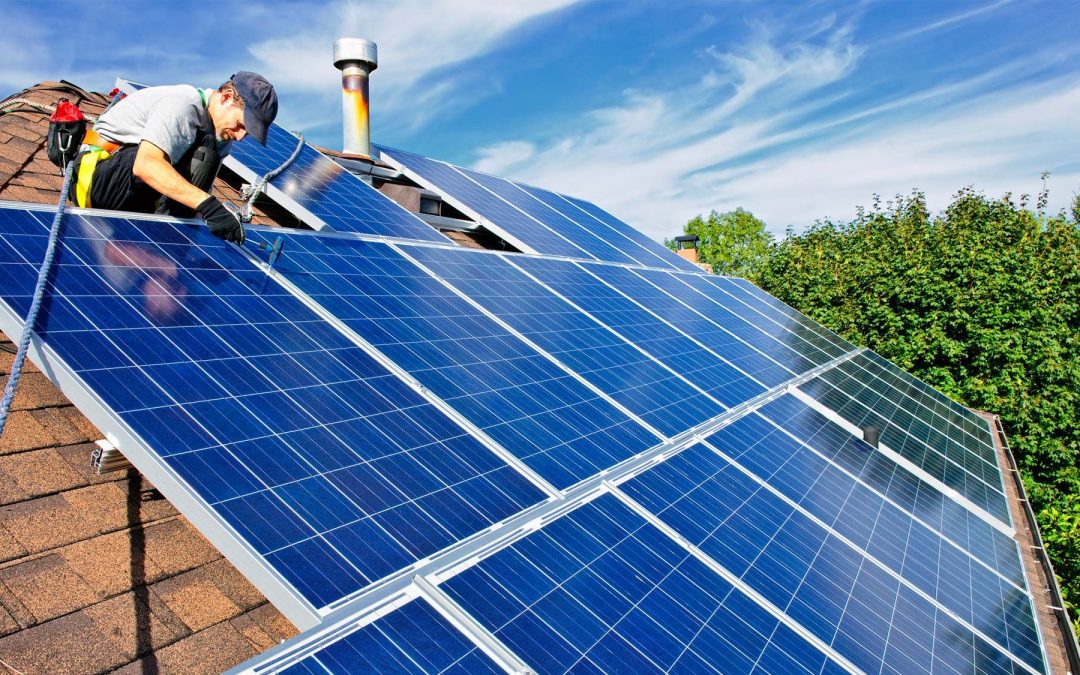That depends on how you intend to pay for them. Until recently the Energy Savings Trust (EST) estimated that fitting solar panels would knock £120 a year off average energy bills. That ’s thanks to the fact that around 50% of the power captured would end up being used by a householder. Now they have changed their mind. Noting that there is no way of storing the energy from solar panels and that most people aren’t at home during the day (when most of the power is captured), it seems that the actual energy used will be more like 25%. That brings the annual savings down to a mere £70.
This will be of little interest to anyone who can pay to have the solar panels fitted out of their own pockets. Any energy they aren’t around to use is sold back to the national grid under the government ’s feed-in tariff scheme (FITS), typically earning them over £1,000 a year.
But anyone who has embarked on a rent-a-roof scheme, or is considering doing so, will be unimpressed. Under this scheme a firm installs panels on your house for free (these would normally cost £14,000 or so). That saves you the up- front costs. But the catch is that the firm gets to keep all the money made from selling excess energy back to the national grid, while you just get the reduction in your bills from the solar power you use.
So you go through the hassle of having the panels fitted and having equipment owned by someone else on your roof, which could reduce the resale value of your house and irritate your neighbours. And, under the new estimates, you will do so for a saving of around £5 a month. Hardly worth it, really. You could also be taking a risk with your provider. The number of companies offering to fit solar panels for free has exploded in recent years from about 400 a couple of years ago to 2,000 today – and not all are entirely reputable. So if you do decide to go ahead, make sure you check out the firm and any small print – some contracts run for 25 years, longer than you are likely to own your house.
So what if you can pay the up-front costs yourself?
This makes panels a much better deal . Under the government ’s FITS scheme, any money you make from selling excess energy back to the grid is tax-free, the scheme is guaranteed to last for 25 years and payments will rise in line with inflation. But there are some risks, the main one being the guarantee. The government is already reviewing the tariff system and the payments to new panels are widely expected to be reduced in the near future. And who knows what future cash-strapped governments may do? So if you fit solar panels, be aware the deal may not always be as good as it looks now.
Deciding whether to get solar panels installed on your roof is a personal choice that depends on various factors. Here are some pros and cons to consider:
Pros:
- Renewable Energy and Environmental Benefits: Solar panels harness the power of the sun to generate electricity, reducing your reliance on fossil fuels and lowering carbon emissions, which contributes to a cleaner and more sustainable environment.
- Potential Cost Savings: By generating your own electricity, you can reduce your dependence on the grid and potentially save on your energy bills over time. The amount of savings depends on factors such as your energy consumption, solar panel efficiency, and local electricity rates.
- Government Incentives and Tax Credits: Many governments offer incentives and tax credits to encourage the installation of solar panels, which can help offset the upfront costs and make it a more financially attractive option.
- Increased Property Value: Solar panels can enhance the value of your property, as they are seen as an attractive feature for potential buyers who prioritize energy efficiency and sustainability.
- Long-Term Investment: Solar panels typically have a lifespan of 25 years or more, providing a long-term investment that can continue to generate electricity and savings well into the future.
Cons:
- Upfront Costs: The initial installation cost of solar panels can be significant, including the cost of panels, inverters, mounting equipment, and installation labor. However, government incentives and financing options may help mitigate this barrier.
- Weather Dependence: Solar panels rely on sunlight to generate electricity, so their effectiveness can be impacted by factors such as weather conditions, shading from trees or buildings, and the orientation and angle of your roof. Cloudy or shaded areas may affect their efficiency.
- Maintenance and Repairs: While solar panels generally require minimal maintenance, they may need occasional cleaning and inspection to ensure optimal performance. Additionally, in the rare event of damage or malfunction, repairs or replacements may be necessary.
- Property Aesthetics: Some homeowners may have concerns about the appearance of solar panels on their roof, as they can alter the visual appeal of the property. However, advancements in solar panel design have made them more aesthetically pleasing and integrated into the roof.
- Return on Investment: The return on investment for solar panels depends on various factors, including the cost of installation, energy savings, government incentives, and the length of time you plan to stay in the property. It’s important to evaluate the financial viability and payback period specific to your situation.
Ultimately, the decision to install solar panels on your roof should be based on your energy goals, budget, location, and personal preferences. Consulting with solar energy professionals, assessing your energy consumption, and evaluating the available incentives can help you make an informed decision.

